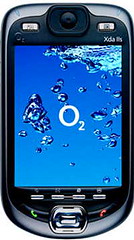Munna Bhai Software Engineer!!!
Appun jaise tappori s/w Engg. ko kya maalum...
saala programming kis chidiya kaa naam hai...
template me subclassing karke apanaa timepass hota hai....
copy paste kaa kaam miltaa hai, bass appun khush...!!!
fir yeh coding kaa lafdaa locha kaiko?
are kaiko ?
arre kaiko re?
fir ek din boleto appun ko assignment mila.....
ya haaaaaaaaaa!!!!
saala appun ka khopdi chakkar kha gaya ...
computer ke saath dil saala takkar kha gayaa...!!!
appun ko lagaa appun kaa beda paar ho gaya...
boleto baap saala appun ko bhi kaam mil gaya...!!!
din bhar appun computer ke aagge...
koi lafdaa nahi kuch nahi...
tin din naa Raghu se raada na Abbhi se pangaa
bass choop chaap...
appun kaa bhidulog saala dar gaya...
bola kya be manya saala tu bhi programmer bann gaya...!!!
phir ek din appun ko kaam kartaa dekh vikya bola...
ye mannubhai kya coding bana rela hai baap...!!!
vikya ko pakdaa... bola idhar aa shahane tereko coding seekhataa hai...
saale ko itnaa dhoyaa itnaa dhoyaa...
abhi tak thobdaa waakadaa hai ...
aur aaj tak uska forms ke saath chattis kaa aakdaa hai...!!!
samzaa ..?
samzaa...?
samzaaa naa...?
(fir ...? fir kya huwa..?)
fir ek din appun ne coding poora kar diya...
form poora karke appun ne testing ko bhej diya...!!!
lagataa tha ab appun kaa kaam khatam ho gaya...!!!
par DTS me issues dekhake sala appun darr gaya...!!!
appun ke saamne tester ne mere coding me ki galtiyaa nikali...
aapun ke coding ki poori waat laga di....
appun udharich khadaa thaa...
par appun kuch nahi bola...
kaiko bolega?
kaiko...?
saala ek, ek kaam kiya thaa... usme bhi itne bugs...
par appun ek aansu nahi roya...
kaiko royega...?
kaiko..?
saala appunich yedaa thaa naa...!!!
agale din se phir wohi life chalu...
wohi mails forward karnaa, wohi messages, wohi template....
saala itnaa mails forward kiya...itnaa mails forward kiya...
log samze mail server down hoyega...
bhoolneka hai bhoolneka hai par kya karega...!!!
training milke bhi jab kaam nahi miltaa hai...
haa thoda bore huwa par chaltaa hai...
training milke bhi jab kaam nahi miltaa hai...
haa thoda bore huwa par chaltaa hai...
(phir ..? phir kya huwa..?)
fir ...?
fir kya...?
fir agale din appun ko aur ek assignment mila...!!!
shaappak...
saala appun ka khopdi phir chakkar kha gaya ...
computer ke saath dil saala phir takkar kha gayaa...!!!
ho ho ho hoooooooooooooooooooooooooooooooooo











